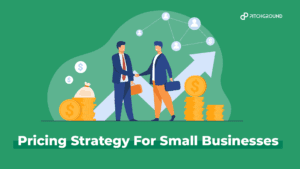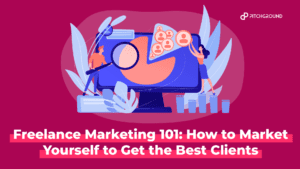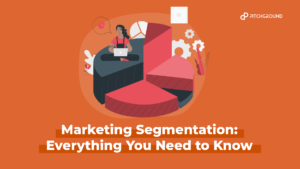This article is a great starting point for those who are new to affiliate marketing.
It’s also an excellent place to start to burst the hype bubble around becoming a millionaire in a few weeks just by dropping affiliate links on the web and, instead, setting realistic but not demotivating expectations.
My first promise is that I won’t say words like “Make Money While you Sleep” (Yeah, I’m talking to you, Forbes-like sites).
We will take a look at the following items:
What is affiliate marketing?
Affiliate marketing is a performance-based tactic in which an affiliate earns a commission by promoting or ranking products, services, webpages, and the like.
Performance-based affiliate programs (affiliate partnerships) will typically pay affiliate marketers when a visitor/customer takes some specific action on their affiliate site to purchase a product through their affiliate link such as signing up for an email list, filling out a form, or purchasing something from their website. Sometimes the affiliate relationship between business and marketer can be even more improved by adding a tier-based commission.
It’s easy to see how affiliate marketing can be so successful. Every business needs customers in order to survive!
The affiliate who refers those customers is rewarded handsomely for his efforts! Affiliate marketing programs are one of the few methods available that allow just about anyone with web access and the ability to write impressively to make money with affiliate marketing!
Sounds good, right?
The affiliate marketing model is booming. In 2017 alone it’s estimated that affiliate marketers will influence $500 billion in sales and generate more than $6 billion in affiliate marketing commissions.
That’s just the U.S., not even counting global affiliate marketers!
This number doesn’t even include affiliate marketing revenue from businesses outside of affiliate networks because most affiliate programs are hosted by affiliate networks (we’ll talk more about this later).
In fact, there are now over 1 million affiliate marketers online, a huge increase compared to just over 200 thousand affiliate marketers five years ago!
And as you can imagine, these numbers are only going up with time.
With all of this success, it’s no wonder affiliate marketing is now the first step in most people’s careers!
There are affiliate marketers of all different ages, backgrounds, and experience levels.
In fact, affiliate marketing success stories are everywhere you look.
But it wasn’t always this easy to become an affiliate marketer.
There was a time where affiliate programs were only available for brick-and-mortar businesses with products or services to sell directly through affiliate networks.
That all changed around the year 2000 when affiliate networks like Commission Junction (now Rakuten Marketing) started offering affiliate marketing programs for digital goods such as ebooks, downloadable software, and online courses so that anyone could start their own affiliate business promoting digital products without needing to create those products themselves.
This made affiliate marketing available to anyone with something to promote, and affiliate programs exploded in popularity!
Today affiliate marketing is a multi-billion dollar industry, and it’s growing every day. Even more so in the digital product space like courses, e-books, and many more.
How Affiliate Marketing works
First, let’s understand the five elements in Affiliate Marketing and how they articulate.
Merchants
As said before, the merchant is the company that produces and sells a product.
Once the company has decided to use an affiliate channel, they can choose to work with a middleman that would be an affiliate platform that connects merchants and publishers or building their affiliate program and systems.
The first option is straightforward as the platform already gathers the publishers and software to be run.
The downside is that as affiliate marketing is performance-based, the profit the company should give up is the highest over other channels.
Adding a platform would add a commission or flat fee that increases, even more, the total expense of selling a product.
The second option is building their affiliate system that could be a custom software development or by subscribing to a tool that offers all the elements and features needed.
In that case, the merchant should market its affiliate program.
Affiliate marketing platforms
These multilateral platforms connect merchants and publishers and take a margin for such operations.
Affiliate marketing platforms play an essential role in the affiliate marketing space because they help to solve specific pain points:
- Merchants don’t need outreach publishers to get their products featured and marketed.
- Merchants don’t need to build their tracking system
- Publishers can save time on product research by finding all opportunities in one single place.
- Publishers avoid the hassle of finding merchants and negotiate a commission.
The downside, as mentioned before, is that both publishers and merchants give away part of an already compromised profit.
Affiliate marketing platform examples
- CJ
- Amazon Associates
- Ebay Partner Network
- More listed below
Affiliate marketing software
While not broadly mentioned within the elements of Affiliate marketing, there are SaaS companies that offer merchants a way to build their affiliate system.
And it’s not that disruptive and unexpected, they work like a referral marketing software, being labeled differently but with the same features.
But, what is the difference between referral and affiliate?
Referrals leverage current customers who are willing to recommend your product; affiliates are any 3rd party who’s willing to endorse and promote your product, even if they haven’t used it.
Examples
Publishers
Publishers are the individuals or companies that dedicate to promote merchants’ products.
While we will cover how they do it in greater detail in a future section, we will take a quick look at how they monetize.
Generally, Publishers have their website, and their job is to attract traffic and build an audience that they will redirect to the merchant’s product pages through referral links.
Let’s explain it with an example.
Imagine you are an expert on octopus meat (that’s the first thing I came up with, sorry), and you have a blog where you write around this topic.
As your content is great, you start collecting an audience of octopus meat lovers who consume and trust your content.
While you talk around octopus meat—and its incredible benefits and components—you cite and link back octopus providers you recommend to your audience.
A small percentage of your audience will click through these links and will land to the merchants’ site. And a tinier portion of them will end up buying.
Once these visitors make a purchase, a merchant can track with the URL (aka, the affiliate unique link) where the customer came from and will pay you, the publisher, a commission.
Sounds simple, right?
Well, there are many nuances we will consider and will mention later.
But so far, that’s how publishers can make money with affiliate marketing.
Consumers and users
Finally, it’s the user or consumer who engages with publishers’ content and buys merchants’ products and turns into customers.
Have you ever wondered where customers come from?
From the buyer’s perspective, buying online doesn’t involve technical jargon.
Buyers don’t say they bought a product through a referral or affiliate link; they don’t claim they’re potential customers or are in the middle of the funnel. Consumers don’t think as marketers do (ideally, it should be the opposite).
People hardly remember they click on Facebook or Youtube Ads.
If you ask the average person, they might say they don’t trust advertising, and marketing doesn’t influence their decision making (but all we do, anyways – marketing comes in many forms).
People don’t like to be sold, but they want to buy it.
People don’t trust advertising and companies, but they trust other people’s opinions and information (aka, Word of Mouth).
And that’s why affiliate marketing makes sense in today’s marketing world.
In the next section, we will highlight the benefits of using Affiliate marketing as your revenue stream, against other ways to do marketing and “making money online.”
How much can affiliate marketers earn?
Affiliate marketers can earn commissions ranging from 15% to 100% on any sales they generate.
That’s certainly a high number affiliates income wise!
But affiliate commissions or affiliate income are calculated based upon the affiliate’s commission rate and the affiliate network.
Making money with affiliate marketing is rising in popularity fast since it gives those marketers certain freedoms.
Most affiliate networks payout between 50-70% of their total revenue to their affiliates, taking 30-50% for themselves (the rest goes towards expenses such as payment processing fees).
When you see an affiliate promoting a product with a higher commission rate than your affiliate link, that means the affiliate either has a better-paying affiliate network they’re using or they have negotiated higher rates with the advertiser.
That being said, there are now affiliate programs offering up to 100% affiliate commission rates (conversion rate fees or CPLs).
CPL is something new in affiliate marketing where affiliate networks charge advertisers a fee (the CPL percentage) for every sale that happens under the affiliate’s link.
In order to do this, you can’t just be promoting affiliate links for products on your own website–you must also have a “storefront” such as an online store, membership site, blog with e-commerce functionality, etc.
Affiliate marketers are typically paid once per month. The range varies on how well the marketer setup his funnel.
If done well a yearly income between $25000-$125000 is not uncommon.
If affiliate marketing worked this well for other people, it’s not a stretch to believe that affiliate marketers are making the kind of money they really deserve.
Affiliate marketing does require some additional skills beyond what you need in order to promote affiliate products on your own website.
But affiliate networks provide “turn-key” affiliate solutions that anyone can use to get started with affiliate marketing as quickly and easily as possible.
What affiliate marketers do for your business – Why affiliate marketing?
Affiliate marketing has been around for ages, and it’s only growing in popularity. Why is affiliate marketing so popular? Well, affiliate programs are a win-win for both affiliate marketers (and their customers).
Affiliate marketing vs other business models
To highlight the advantages and disadvantages of Affiliate marketing, we will compare it with other ways to create a passive income or revenue stream “on autopilot.” No, it’s not the only type of marketing that sells you such an overpromise.
Multi-Level Marketing vs Affiliate Marketing
Both multilevel marketing and Affiliate marketing share a principle: recommending others a product.
Their advantage relies on the fact that recommendation tends to be a more trusted source of information for decision-making than advertising or direct marketing channels.
However, with MLM, you would have to force a person to manually buy or subscribe “under” you, fundamentally forcing the otherwise organic nature of Word of Mouth, causing aversion.
And you know, Multilevel marketing is the most repudiated form of marketing; it is even associated with pyramidal or illegal schemes.
Meanwhile, on affiliate marketing sales and commissions are attributed to you automatically when someone just clicks your unique links, representing a lower effort.
Another advantage of Affiliate marketing over MLM is that your potential audience reach is not limited to your inner circle or your closest friends to whom you can easily talk to, but thousands of people simultaneously.
Instead of individually approaching every new potential referral, it is your website, blog, or videos reaching and engaging people anywhere, anytime.
Affiliate marketing vs Google AdSense and other ads networks
Both Google AdSense and Affiliate marketing work technically similar—they track audience responses by clicking unique links.
However, one of the differences relies on the action or conversion that generates the monetization.
Remember, on Affiliate Marketing, payments occur when someone clicks AND ends up buying from the merchant.
On Google AdSense, you can get paid when someone clicks a link through an ad or even when the ad is just served on your site; besides other options bidding types.
Unlike Affiliate marketing, which works with plain links, on ads networks, publishers only showcase merchants products through banner, text, and dynamic ads, just like this one:
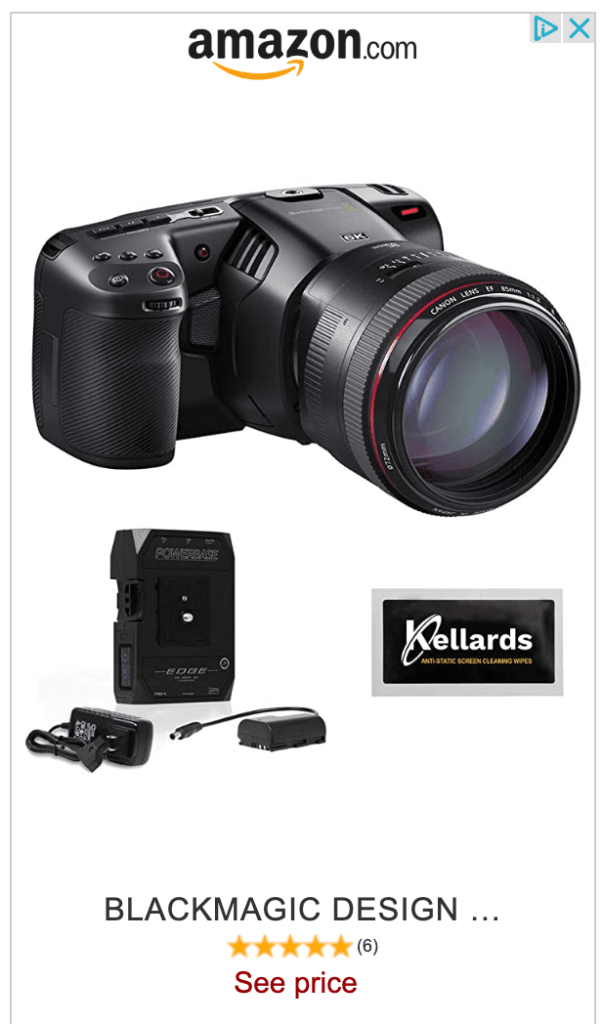
Which one makes more money?
The higher the effort from a consumer, the better the commission, such as the higher the risk, the higher the profit.
A company is willing to pay more when they get a customer than when they get a click. While twenty clicks may translate into a purchase, the actual purchase is a surefire, and such certainty is traded with a higher commission to the publisher.
So you can test and ask yourself: do you prefer to be paid when someone clicks on ads served on your website or channel or when someone ends up buying? What is your risk aversion?
As a rule of thumb, it depends on the relation between the quality and quantity of your traffic.
If you have a low but well-defined audience, choose affiliate links as the chances are that some of your traffic might convert.
If you have a massive volume of traffic on a broad, popular topic, you might want to choose clicks or even impressions over conversions, being the case for entertainment and media sites, for instance, whose audience is broad.
Where do you feel better within this curve?

Affiliate Marketing vs Dropshipping
Dropshipping consists of running an entire online business without keeping inventory. You build your brand and audience to get traffic, you convert traffic into customers through a payment gateway, all by selling someone else’s product.
The huge advantage is that you save upfront costs on product development. The risk is you fight with tight margins that are hard to keep above the cost per acquisition, as you also need to run your marketing.
And finally, Dropshipping has a terrible reputation for low-quality products, and, unlike Affiliate Marketing, is it your brand and your site that will be accountable for such lousy customer experience.
Once you understand the different roles you can play within the online value chain, which one would you choose?
The more of the value chain you handle, the higher the sales margin you should expect.
How to get started with Affiliate Marketing
Once you decided you want to test Affiliate Marketing, these are the following questions or steps you should consider. You can also start by reading how these 36 affiliate marketers got their first sale.
What niche to choose
Always, choosing a niche starts by having interests that lead to authentic expertise. These are some tools and criteria to help you choose better, though.
By definition, a niche is a well-defined, specific audience that you can target. Software is not a niche, but an industry; digital solopreneurs is a niche, and you can even narrow it down more.
One of the 1st things you want to look at is market potential and Total Addressable Market (aka TAM).
To gauge potential, we will use Exploding Topics, a free tool that alerts up-trending topics based on Google searches volume.
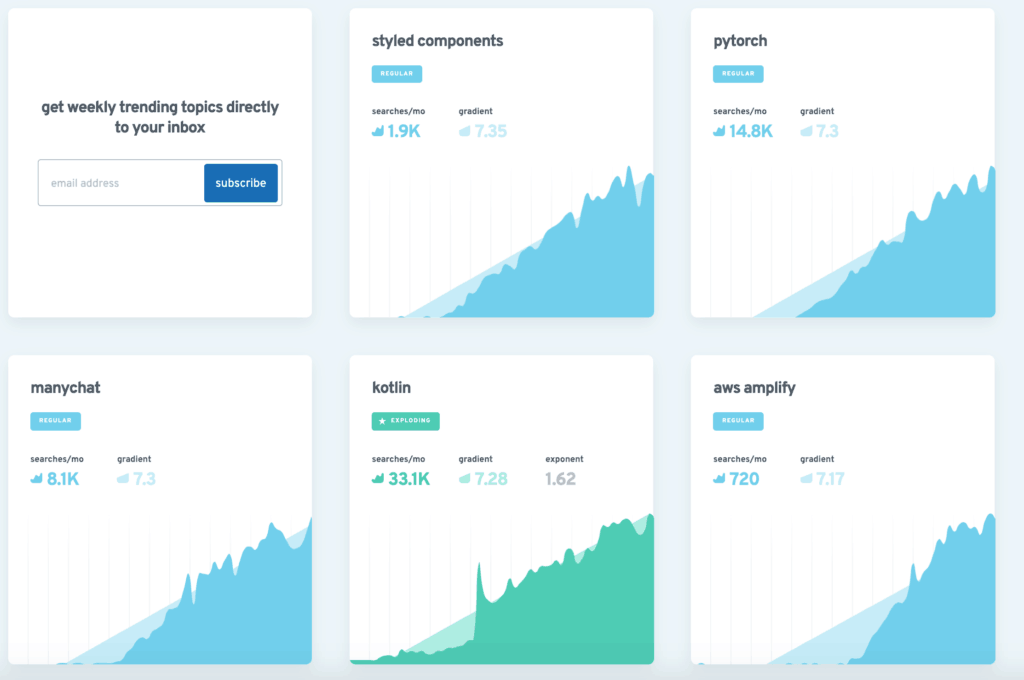
Its beauty is that it doesn’t just spotlight well-known, popular topics, but hidden gems that are non-obvious for most people (and especially your competitors).
Exploding Topics is not about finding famous niches to take on, but those that are not obvious whose interest is growing fast but silently.
This way, you can spot pretty solid niches before anyone else, helping you be first (or at least one of the first), increasing the chances to dominate such a niche.
Another way to choose a niche is by simply using Google Trends.
You can compare two topics to know which one is more popular and has more significant potential.
I just compared two topics I came up with: e-cigarettes vs. Trekking, and here’s how results look like:
It’s clear: e-cigarettes are way more popular than Trekking, showing you the go-to niche—and also showing us how bad people are to make rational decisions :(. Yes, e-cigarettes are not good.
What products to sell
There’s a vast range of popular affiliate products; the most common ones you’ll see are beautiful, expensive hobbies (like buying bicycles), fitness, online courses, casinos, fashion, and even loans.
To choose the best products, you can start by thinking of two criteria:
- Sales Cycle
- Profit
- Diversification vs. specialization
The sales cycle is about the time that can pass between someone who is aware of a problem and ends up buying a product.
Impulse products are those that you buy immediately without thinking twice, like candies.
There are also high-involvement or high touch products whose decision-making process can take months or years, like buying cars or real estate, but they are more expensive, which means better margins — and that’s why real estate brokers are willing to wait so long for a closing a sale.
Take in regard affiliate links will expire within days; if someone clicks your unique link and ends up buying 300 hundred days after, chances are you won’t get a commission.
I don’t feel I should judge or decide for you, or tell you what affiliate product to pick. If you’re an expert or fanatically interested in a topic, you will figure out products that a) people want and b) are not obvious.
For instance, at Pitchground we are software fans (and experts). We’ve built a SaaS marketplace with hundreds of deals and thousands of customers.
Doing affiliate marketing for software may sound counterintuitive. As I said, long sales cycles are not suitable for affiliate links.
But B2B doesn’t necessarily mean super high tickets and sales cycles. We work with apps for individuals and small teams whose cost is a one-time payment of less than $100. You can check our app library right here.
Chances are you won’t be promoting one product but a portfolio, forcing you to decide to choose a wide range of products and categories or narrow your list to three or 4 winning products (aka diversifications vs. Specialization).
You can find products with small commissions but high sales volume. Those are called anchor products. Those who drive cash flow and traffic.
How to Market your products
When you start searching on Google how to market your products (and you will), you will be flooded by thousands of expert bloggers offering the magic of their unique hardcore methodology.
As soon as you start your online research, you’ll immediately see dozens of ads of entrepreneurs in front of fancy “Lambos” telling you how they transitioned from being nobody to make “7 figures” within months, after learning and applying a consistent and predictable method. For the record, that’s called re-marketing.
Their narrative is disgustingly similar. Just a heads up: those case studies, if real, are atypical success cases, not the norm.
Most of it is BS or, at least, misleading.
I will introduce you to the main digital marketing channels that will help you drive website traffic and show you some sources that I find reputable and trustworthy.
SEO
SEO refers to Search Engine Optimization, and it is the practice of increasing your site traffic by making your site show on the first page of a search engine (mainly Google) when someone types (or says) a keyword or query.
This result is what I see when I type “English tea” (Fun fact: while tea is famous in the UK, it’s mainly from India and China).
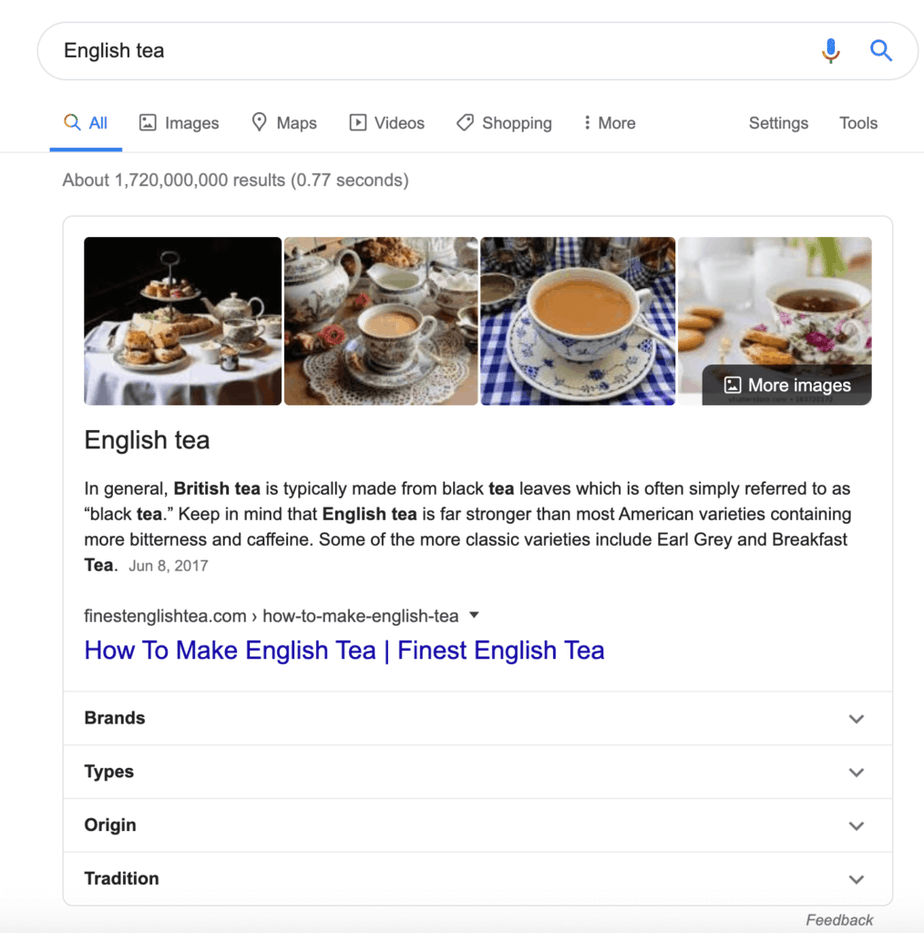
The first results you see are “organic” results; these sites are not (technically) paying a dime to show up first. SEO tends to be the primary traffic source.
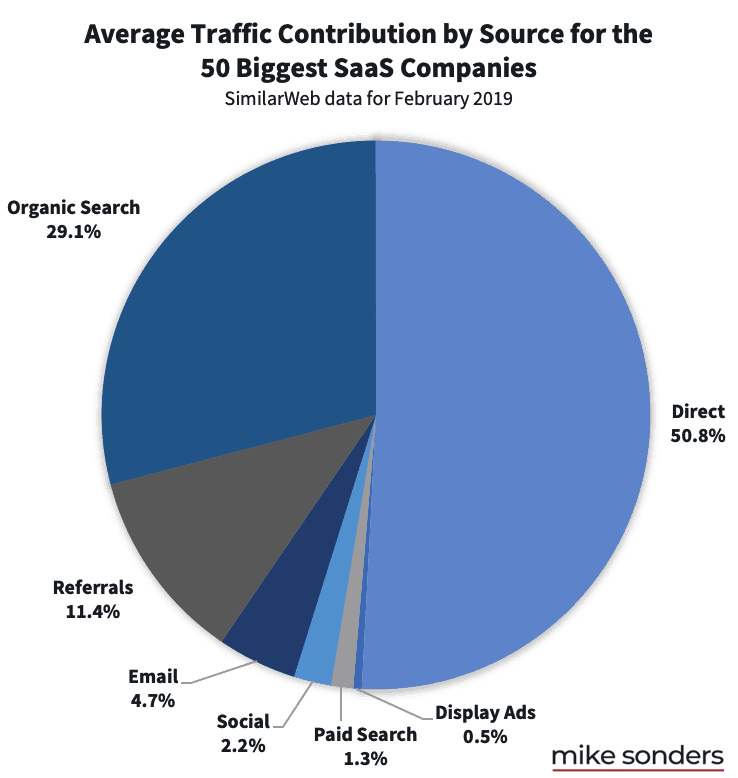
Its huge advantages include that it’s a consistent stream of free traffic; the downside is that it is the longest-term marketing tactic, just behind building a brand that takes years, if ever.
While some say it takes from 4 to 6 months, it’s not an accurate, consistent benchmark.
For the software industry, for instance, SEO is the main web traffic source.
And the leading search engine out there is, yeah, you guessed it: Bing!
Just kidding, it’s Google.
When doing Search Engine Optimization you will inevitably talk about keywords.
Keywords are the specific queries a user uses on a search engine to respond to an intent.
You may think of keywords in two ways: by type of intent level and extension.
If you’re searching for best online shoe retailers, your search expresses a buying intent; when searching about what are the best shoe materials during winter, your search expresses an informational intent.
We could say that ranking on search engines for the commercial-intent keywords is more valuable, but competition is tight and all affiliates and retailers are pursuing those keywords.
The value of information-oriented keywords is that they represent a potential buying intent in the future; when ranking for them, you’re reaching a new coming audience that can eventually lead to a sale.
To get started on Search Engine Optimization, we recommend these free resources:
- SEO For Beginners: The Only Guide You Need in 2020 to Learn SEO
- Introduction to SEO: Tactics and Strategy for Entrepreneurs
- SEO Training Course: Building Sustainable Traffic for Business Growth
- Ahrefs Academy
Email marketing
Do not believe email marketing is dead.
One of the main pieces of advice you will read when learning online and affiliate marketing is “build your list“. It means you ought to build an email database of people you can reach out again and again (but not that much).
Why collecting emails?
If you reflected on the things you can own on the internet, the list would narrow to your website and email list.
If you have a Youtube channel, it’s owned by Youtube, not by you.
If you have a Facebook page, it’s owned by Facebook and if you already know that, you may have also seen that it’s organic reach tends to be lower and lower. This platform and others like Instagram and TikTok are great for Social media influencers though. One social media post and their traffic can go through the roof!
If you have a remarketing audience (click that link to learn the beauty of online marketing), it’s owned and eventually controlled by Facebook and Google Ads platforms.
If you build an audience through Google Organic Traffic only, you’re subject to Google’s algorithm back-and-forth.
But emails, emails are yours. You collected them (legally), and you can manage your communication between your business and your audience through it.
The other two advantages of building your email list, besides ownership, is the ROI and personalization.
A classic way to collect emails is by offering your audience something they might find relevant like a free guide or e-book, or anything whose value is greater than the effort of subscribing to an email list.
Check out this free email marketing course.
Paid Ads
Paid ads seem like the most straightforward solution: pay from day one and get results from day one.
That promise is misleading, and advertising costs don’t play in your favor.
While there are thousands of online advertising platforms and social networks selling ads, the most relevant ones are Google, Youtube (owned by Google), Facebook, Instagram (Owned by Facebook), Alibaba, and Amazon. You guessed it — an oligopoly.
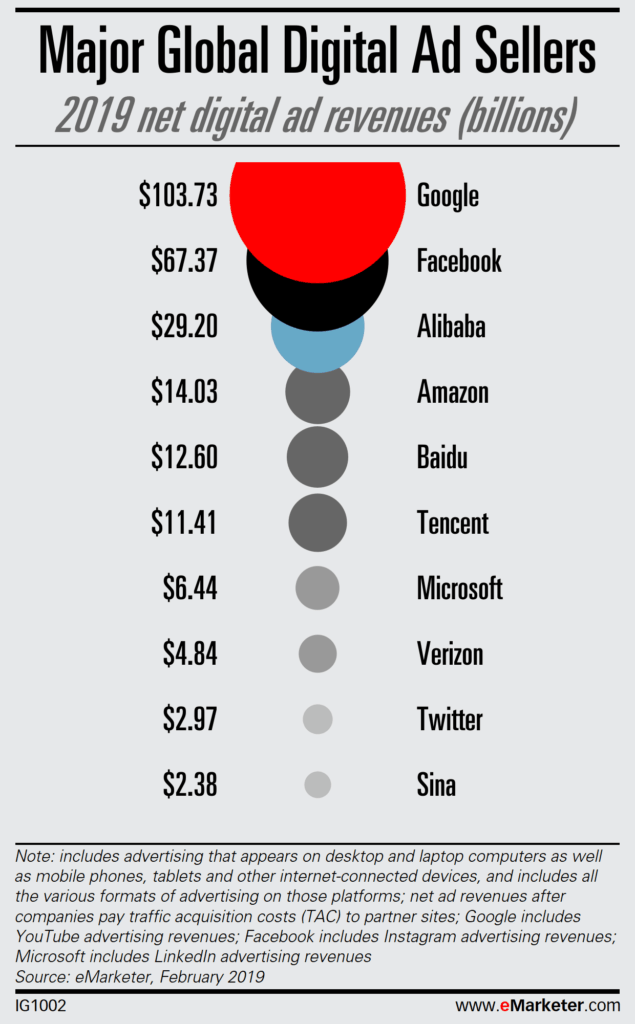
Just as a refresher, here’s how a Facebook Ad look like:
How a Google Search Ad looks like:
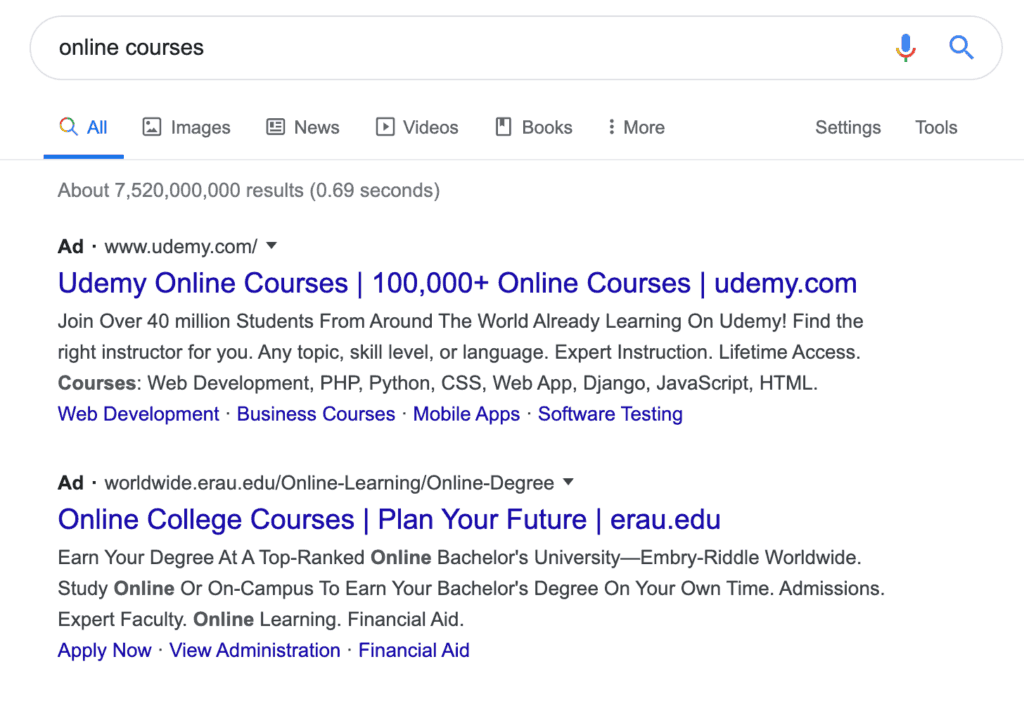
How a Youtube Ad looks like:
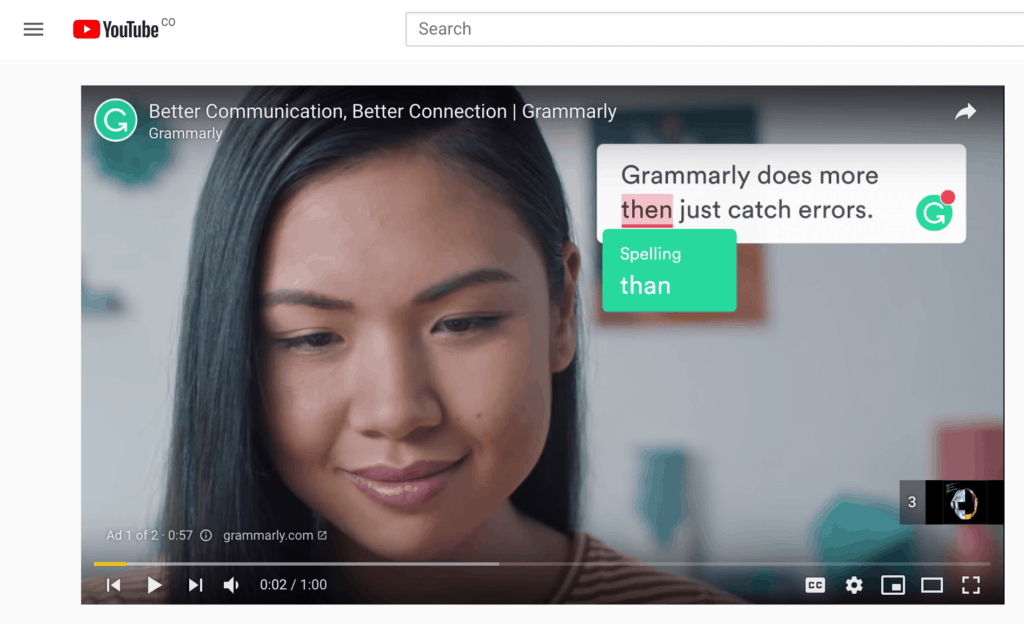
How an Amazon ad looks like:
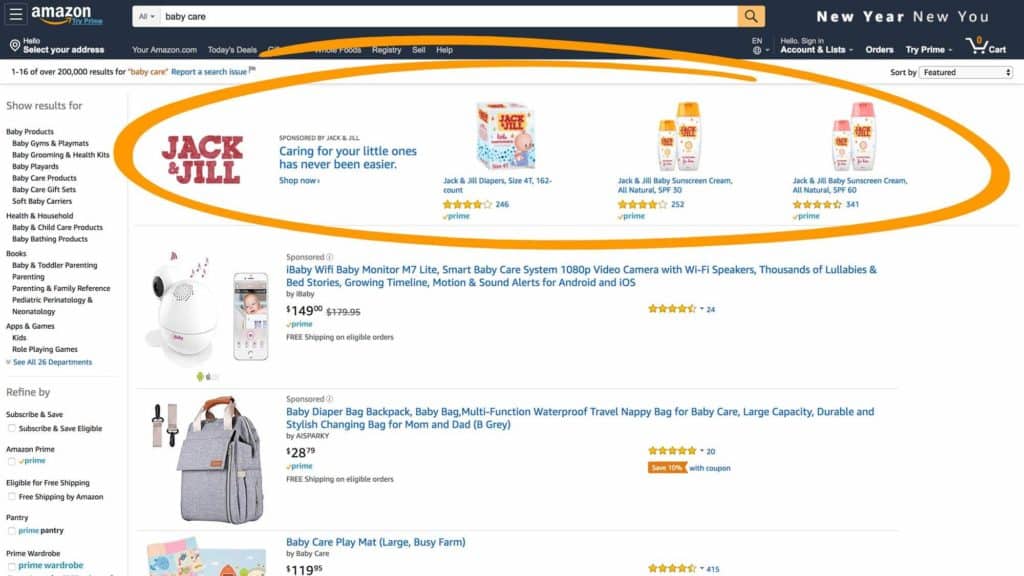
And how a Google Plus ad looks like:
….
I had to make that Google Plus joke somewhere. Sorry.
Higher ad spends, means higher competition and higher ad costs because digital advertising works with smart, real-time biddings.
Keep in mind some metrics you should track to know if you’re making or losing money with digital ads: Customer Lifetime Value and Customer Cost of Acquisition.
Customer Lifetime Value represents (CLTV) the total worth of a customer during his or her entire relationship with your business.
Starbucks calculated its CLTV, and it was as high as $14,000. When building a relationship with a customer, don’t think of a $5 cup of coffee (quite expensive, by the way), but a $14k link, and here’s where I bring the relevance of building your list again!
Also, consider Customer Acquisition Cost (CAC), which stands for—as its name clearly says— the cost you pay to get a new customer. Its calculation is not that easy, though, because it changes by marketing channel and over time.
Just a heads up: when running advertising, make sure your CAC is lower than the CLTV.
Doing so requires your ads to be effective.
And if you wonder how to do so, this is the Pitchground blog! (I haven’t welcomed you formally, what an impolite!).
Here we document and openly share our successes, failures, and learnings while spending thousands of Dollars on Ads daily.
To learn digital ads, we recommend starting by learning from Google and Facebook courses:
Display banners
While Google Ads and Facebook Ads are the most common channels to run online ads —and you will see virtually every marketer runs Facebook Ads, good or bad, but they do— there are other unseen but massive display platforms.
You might have seen titles like these:
“How this man lost 20 pounds in 2 weeks”.
“You cannot believe how [famous person] looks without makeup.”
“Doctors are amazed by this woman’s anti-aging method.”
You know, scammy-like and sensationalist titles.
Here’s an example:

Platforms like Outbrain and Taboola run these ads.
How are they different from other display networks like Google Display or Facebook and Twitter Ads banners?
Practically, you can see Taboola and Outbrain tend to promote more spammy and sensationalist content, while Google demands quality and veracity. It doesn’t mean these are wrong platforms, as their cost per click tends to be lower, and it’s for niches that would be otherwise limited or restricted on Google Ads.

Affiliate marketers also use it. If you click those links, you will see that they redirect to the merchant’s site.
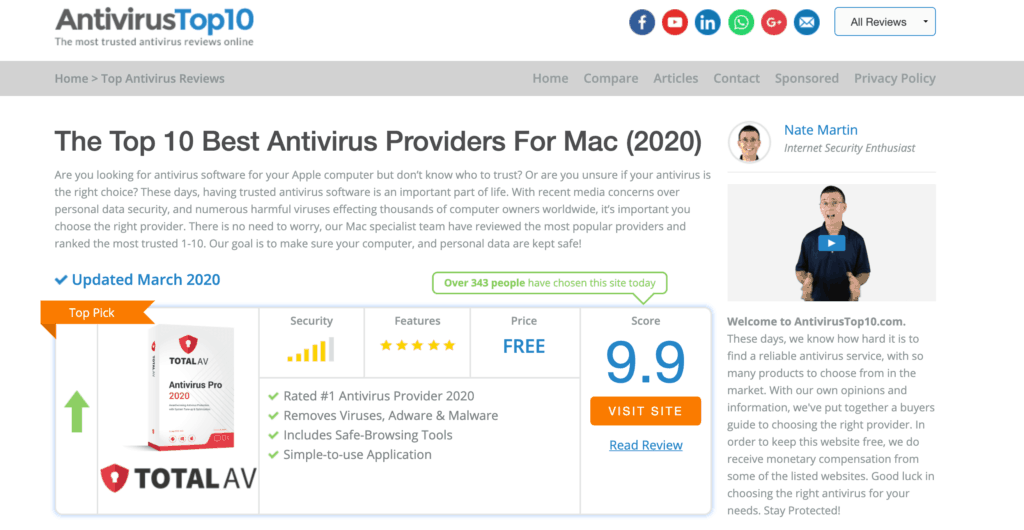
To get started, here’s a step-by-step guide to set up Taboola ads.
Youtube
Youtube is proof that you don’t strictly need to generate website traffic to make a profit. However, do not think of Youtube and owning a website as alternatives, but complements.
There’s a classic stat you will see on any blog post related to video: most web traffic is for video (an average mainly affected by Netflix and Youtube).
The most common way to make money on Youtube is by displaying Youtube Ads before, during, and after your videos.
However, affiliate marketers can leverage it differently.
They can create product reviews and video tutorials, recommending a product to encourage viewers to link their affiliate links on the Youtube video description.
Here’s a specific example.
I just searched on Google “best cameras for making Youtube videos”.
This is one of the results I was shown.
As you can see, they have several shortened, pretty links for products.
When I click one of them, it redirects to a product website.
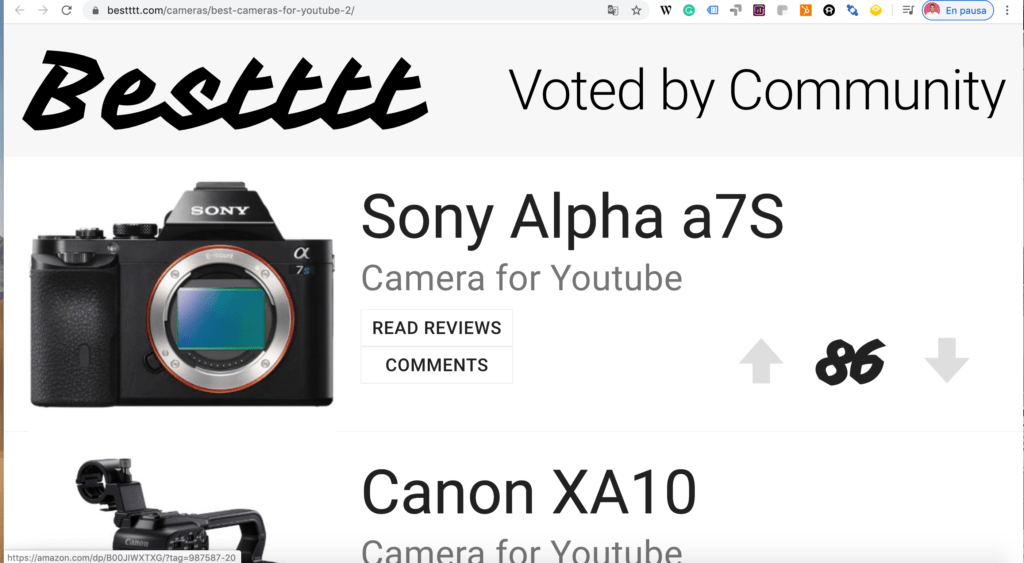
Once I click on the image or product title, that has an affiliate link, it goes to an Amazon product page.
To learn to leverage Youtube for your business, check the Creators Academy, by Youtube.
Social Media
When you do marketing on Social networks like Facebook, Instagram, Pinterest, Twitter, and TikTok, distinguish between paid ads and organic efforts.
Paid ads mean you’re setting an advertising account on these social media platforms to run campaigns where you will pay for reach and clicks, mainly.
Organic efforts represent all those tactics and activities you do without running ads, but they not mean they’re free.
Among other activities, they include:
Social Media posts: you can schedule and automate your posts on Social Media by using tools like Buffer.
Joining or building groups:
Most social networks have a sort of group feature.
Facebook, for instance, favors groups. It means that the social media algorithm may favor your posts on groups by increasing their potential to reach more people.
Whereas you create your own group that you need to grow from the ground or you join one, make sure you share content that members care about, not only through affiliate links and wait for someone to click and make a purchase.
Leveraging influencers:
There’s a lot of hype around influencer marketing.
As Rand Fishkin said, influencer marketing used to be researching the factors that influence people buying decision making; now it’s posting suggestive photos on social media.
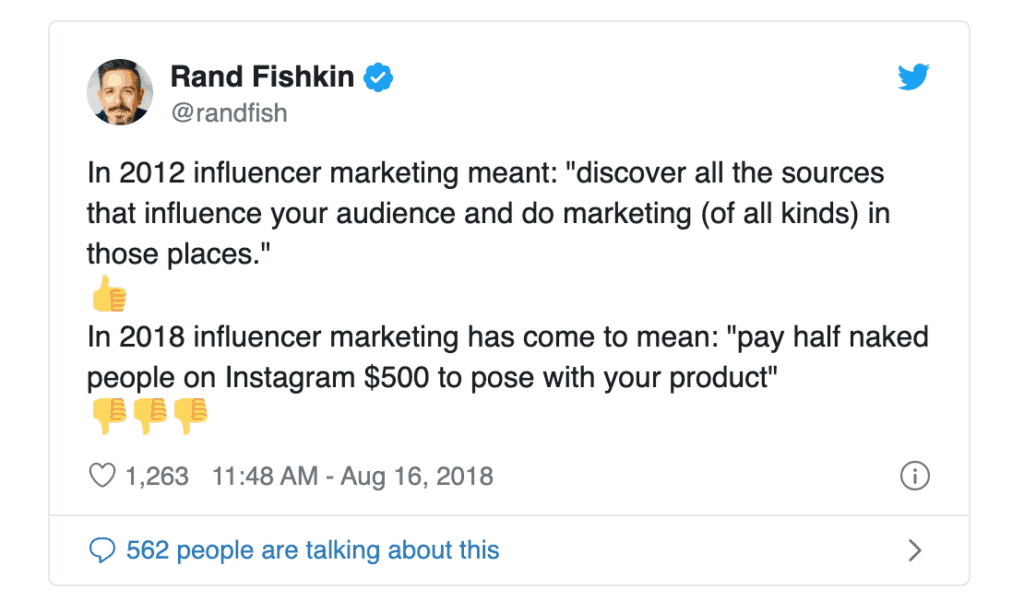
Before looking at follower counts, you might want to check influencers’ actual authority by using tools like Tapinfluence, before paying for hard-to-measure exposure.
Building a brand and an audience:
A brand is all the beliefs, perceptions, and mental shortcuts people have when thinking of products, business—or you.
Branding (aka building a brand) can help you influence, persuade and build trust around an audience.
It’s a powerful tool as it will help you increase the effectiveness of all your marketing channels, while it serves as the fule of positive Word of Mouth.
It’s often said a brand is not created but built; it’s not about crafting a logo, but all the experiences and touchpoints your audience and customers have with your company, shaping a set of conceptions around you.
Consider that brands are abstract and hard to measure.
That’s why their value is unclear in the short term, making some misleadingly believe that it is about earning shares and likes.
While those metrics are indicators of reach (aka brand awareness), they’re not necessarily indicators of influence or success (brand positioning).
Brand awareness is about people knowing you exist; brand positioning is about them liking you.
As a rule of thumb, you will be able to measure the effectiveness of your social media and branding activities by discerning not just the quantity but the quality of your audience.
To measure such quality, you can use metrics like the number of relevant engagements, reviews, and positive comments.
How good branding will leverage your affiliate marketing efforts?
Positive reviews will help you build trust around your audience, increasing the chance of them buying from your recommendations, and increasing your conversion rates in all your marketing channels.
Your most important marketing channel is not your site or list, but the customers that recommend you to strangers.
Content marketing
Content marketing is not a channel, but a fundamental part of your efforts to build an audience, no matter the channel you use.
Content is what makes people click your ads, open your emails, and what helps your site get indexed and ranked on Google. Content is the core of your affiliate marketing efforts.
Remember, the principle of Affiliate Marketing from a consumer’s perspective is to find reliable information sources that help businesses and individuals make purchase decisions.
Such influence will help you to convert your audience into buyers for the merchants you work with.
I could list common content marketing examples—like blogs, infographics, videos, and case studies, to name a few— but the internet is flooded with articles talking about it.
Instead, I will mention some types of content that are trending, unexplored, or not massively adopted.
Podcasts: Take a look at how trendy the topic “Podcast” has become on Google during the latest years:
Besides blogs—because everyone has a blog—you could test podcasts to grow your audiences.
Google, for instance, not only ranks sites, videos, and images—it also displays podcasts!
If you’re starting as an affiliate marketer, your time and resources are limited, so you need to choose the content format you create wisely.
By leveraging podcasts, however, you can quickly repurpose your content and automatically transform it into a blog post by using speech-to-text with services like Amazon Transcribe.
Messenger flows: instant messaging overtook Social Media networks; if we bundled instant messaging apps like Messenger, Whatsapp, Wechat, Line, and other popular services, they have now more users than Facebook, Twitter, and Instagram—combined!
And if we talk about marketing effectiveness, compare the ratio between emails open vs. emails sent (aka open rates); they range from 12,6% to 25,2%, averaging 17,8%, depending on the industry, content, and the way you collect these emails.
Meanwhile, Messenger, for instance, can easily reach open rates of 80% and above.
If you’re considering to leverage Messenger as a marketing channel, take a look at the 8 Best Facebook Messenger bots tools.
Dashboards: You’ve likely seen this Covid-19 dashboard:
It has gained millions of viewers; the interest for dashboards like this one has exploded due to the conjuncture.
Dashboards and data visualizations are a great way of content marketing because they tell stories within seconds that we can take from the staggering amount of data we can collect—every second.
If you want to find inspiration, here’s a library of dashboards built with Google Data Studio—a free data visualization tool— you can take as examples of great storytelling that can be transformed into effective content marketing.
You can start learning content marketing by checking these sites:
Don’ts of affiliate marketing
We all look for hacks or turnarounds—especially those who indubitably buy the idea of making money fast and effortlessly with affiliate marketing (or with anything, in general).
You can keep searching for them. In the meantime, these are some no-nos that are not worth your time trying.
Don’t buy shiny marketing secrets
You will find secrets and techniques with unusual names like the “3X factor dollar secret method”, or the “Moneymaker Funnel technique” or any shiny marketing technique that promises you to turn strangers into fanatic buyers of your product, with three little known secrets.
As far as I can tell, there’s no secret in digital marketing, someone trying to hide from us all. Nor there’s a tiny group of smart marketers with an ultimate quick solution to selling anything to anyone.
If I thought of a few authentic, talented marketers I know, I could say they’re smart, they test fast, and they have developed a gut over the experience that helps them get consistent wins.
However, today’s marketing is founded on testing and measurement, not magic formulas.
There’s no such thing as the magical words that will trigger the buying decision to someone. It doesn’t. Marketers are meant to influence consumers’ decision making, but they cannot control it—we find it to understand it.
I’d suggest a book called the Psychology of Influence, by Robert Cialdini, where you can learn six basic principles of influencing people. Still, none of them relate to controlling people’s minds with quick techniques.
Cookie stuffing
As said before, affiliate links help to track buyers’ sources to attribute a sale to affiliate marketers. These links use cookies.
Cookies are not harmful. They help to personalize the internet. But they can be leveraged by illegitimate affiliate marketers to steal the attribution of a sale.
How does it work?
Here’s an infographic explaining it:
While there are many ways to do cookie stuffing, a common one is that the affiliate marketer pays cheap advertising to drive as much traffic to their site as possible.
Once users land to this site, cookies are installed on their PC (as any cookies).
Then, if the user purchases sites like Amazon, eBay, or other companies, during the time the cookies are active, the affiliate marketer makes a commission.
While it’s true that a visitor landed on the affiliate site, it’s skipping the affiliate link click; there’s no actual influence from the affiliate marketer towards the purchase; however, the commission is attributed, stealing money from other publishers and merchants.
Affiliate links malpractices
As you’re aware of the importance of affiliate links, some tricks can come up to your mind.
- What about placing as many links as possible on a single page to increase their chances of being clicked?
- Or what about masking your affiliate links with anchor text or re-directs that don’t seem promotional, so people click them inadvertently?
- Or what if you place large images with affiliate links on your web pages so no matter where a visitor clicks, they will be directed to the merchant’s page.
- Or what about doing multiple re-directions, so users don’t notice they’re landing on the merchant’s page.
Great ideas! It’s a shame they’re illegal or, at best, they’re penalized.
Hacking Google or Facebook
Besides learning the basics, you might want to go up for quick shortcuts to rank your site on Google or through Facebook Ads or Amazon, for instance.
On SEO, these shortcuts are called “Black hat SEO.” They’re not illegal or technically incorrect, but they tend to be out of Google’s policies.
Some experienced marketers test them and make them work, but the chances are that eventually, they can get penalized. Especially if you’re a newbie, the effort of hacking Google might not be worth it.
Facebook Ads don’t only penalize or block your ads if you don’t follow their guidelines; they can decrease the reach of your advertising, increasing your costs.
Among other penalized Facebook ads malpractices, the most common ones include:
- Using too much text on your banner ads. Read about the 20% rule.
- Promoting sensationalist propaganda or hate speech. Ironically, Facebook doesn’t ban political advertising.
- Explicit or implicit sexual content.
- Spammy-like advertising. While it’s ambiguous, the kind of ads you can run on Taboola is likely to be rejected by Facebook.
Facebook can even penalize marketers who religiously follow the rules for no evident reason.
Selling low-quality products
Affiliate marketing is the low-hanging fruit for most people who get started in digital marketing.
I’d argue that most of these people see affiliate marketing as a quick side hustle to generate a complementary passive income stream.
It sells the idea that you don’t need to worry about the hassles of building a company like developing a product, inventory, supply chain, and so on.
For some, affiliate marketing is a short-term, kind of easy money, making them oversee product quality.
Also, If you’re getting started, chances are you’ll be using an affiliate program (we mention some of the most popular below).
Even big players have been blamed for promoting low-quality products—like they let anyone sell anything without scrutiny.
The result is a pile of inferior products indiscriminately promoted as good stuff through affiliate marketing, damaging its already affected reputation.
Refunds are common. Returns over and over again are a sign of bad quality—and your call to leave a merchant.
You may be wondering how affiliate programs like Amazon deal with refunds after affiliate commissions?
Simple, they don’t.
They wait several days to roll out your payment; they wait for customers to decide if they want a refund, and after the grace period, your balance is available to be redeemed.
It explains why you should be picky when choosing the best products and merchants, instead of just going after high commissions.
I didn’t want to write this section to convince affiliate marketing newcomers about why they shouldn’t defraud consumers, but I guess I had to prevent them.
How a real affiliate program looks like
You may be wondering how much you can earn as an affiliate marketing and how a real affiliate program looks like (to set realistic expectations). Be hesitant about the numbers you find online.
Just take a look at these Google results when you search about how much YouTubers can earn:
They’re diametrically opposite.
They start by showing Youtubers, on average, make less than the poverty line in the US.
While others show you some people have become suddenly rich overnight.
Being 8 years old and self-made rich is the most literal approach to overnight success (just for the record, 8 years is about 2920 nights).
I’m showing you this to avoid the sensationalism of new gurus that sell the dream of fast, easy money.
At Pitchground, we opted to show you how our affiliate program works and how much money our affiliates are making, on average, by answering some quick questions openly.
How much do we pay for commission?
30% of sales.
What are the payment cycles?
Once per month, after 60 days (refund period).
How long do cookies track and attribute a sale?
30 Days with Last Click attribution.
What are our payment methods?
Paypal.
How do we ensure the quality of our software products?
We have a complete audit team to ensure that the products are top-notch and they go through various cycles to ensure that both the founders and products are fantastic.
How do our affiliates tend to make their first sales?
Usually by pushing it to their audience or contacting their friends and family.
How much do our affiliates make each month with our affiliate program?
On average, around $670.
How long have our best-performing affiliates have been subscribed to our program?
Over 18 months.
Here are some screenshots of some actual recent payments we have made to our affiliates:
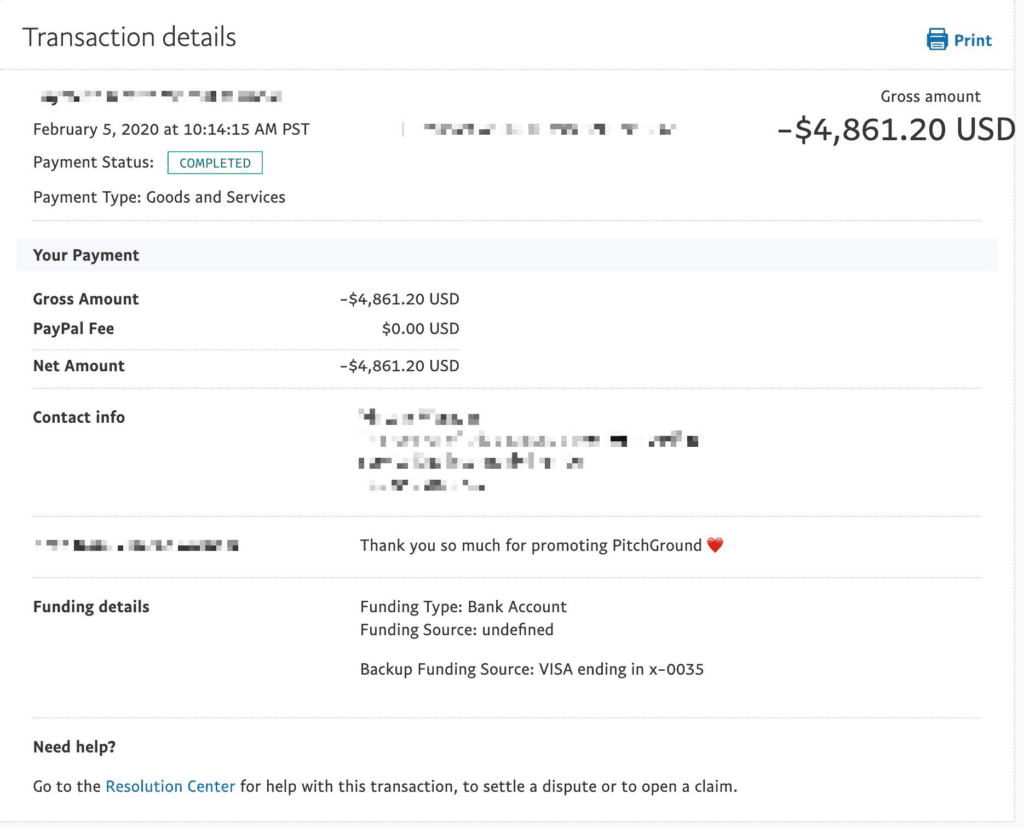
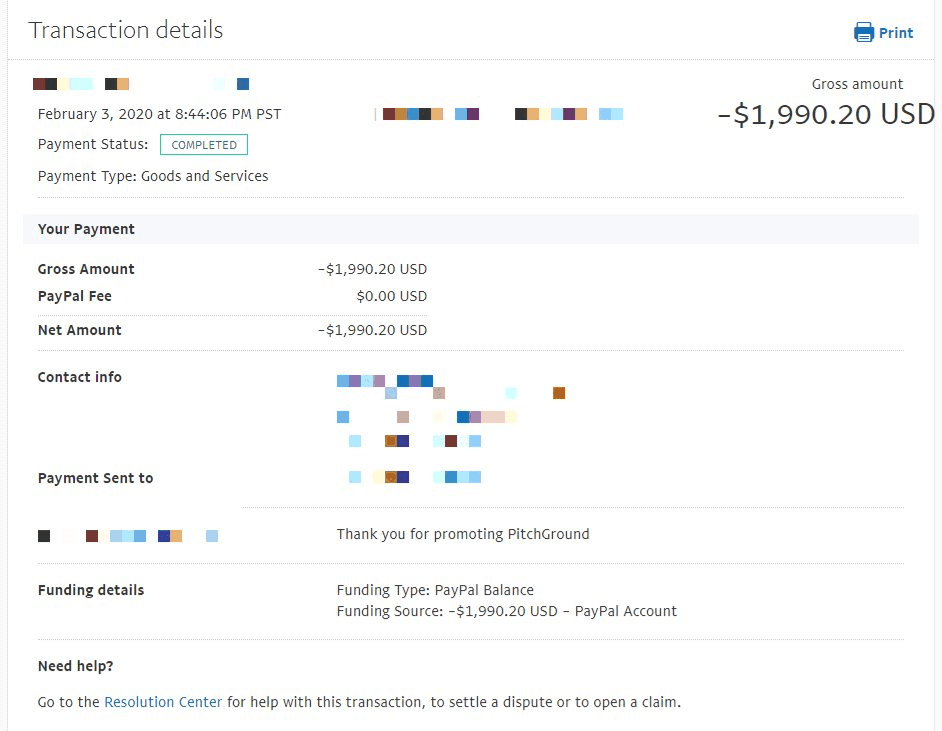
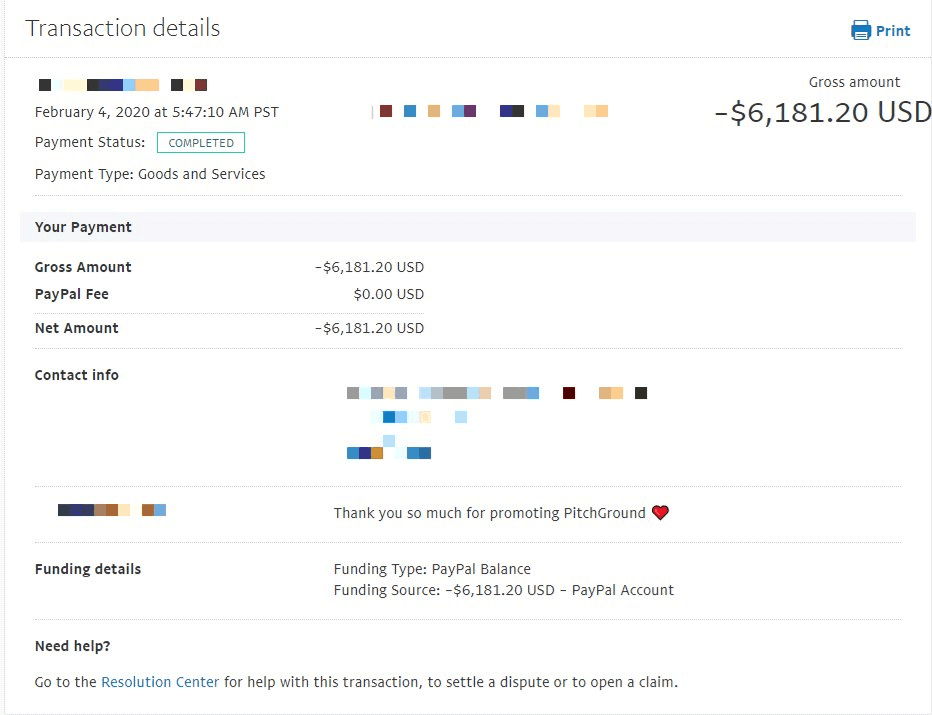
Affiliate platform list
If you have carefully read this article, you know the basics of affiliate marketing. The next step would be picking an affiliate platform. Here’s a list of the most popular ones.
Share A Sale
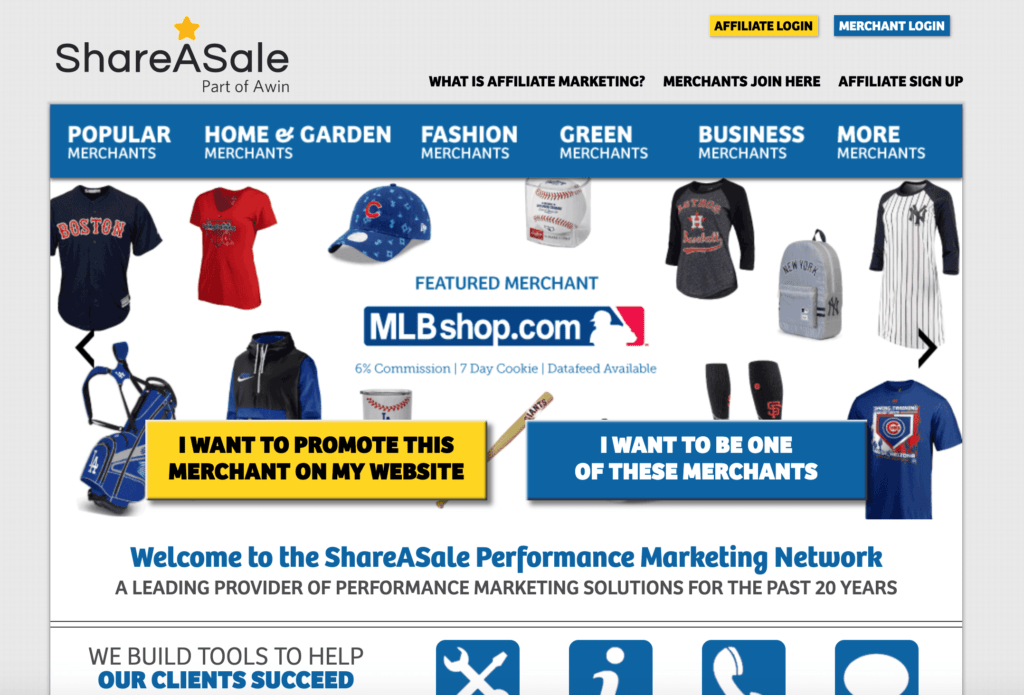
- More than 20 years of experience
- 3.900 affiliate programs
- 40 different categories
- Payment methods: Check, ACH direct deposit or wire transfer, with a minimum threshold of $50.
- Payment times: 20th of each month as a default method.
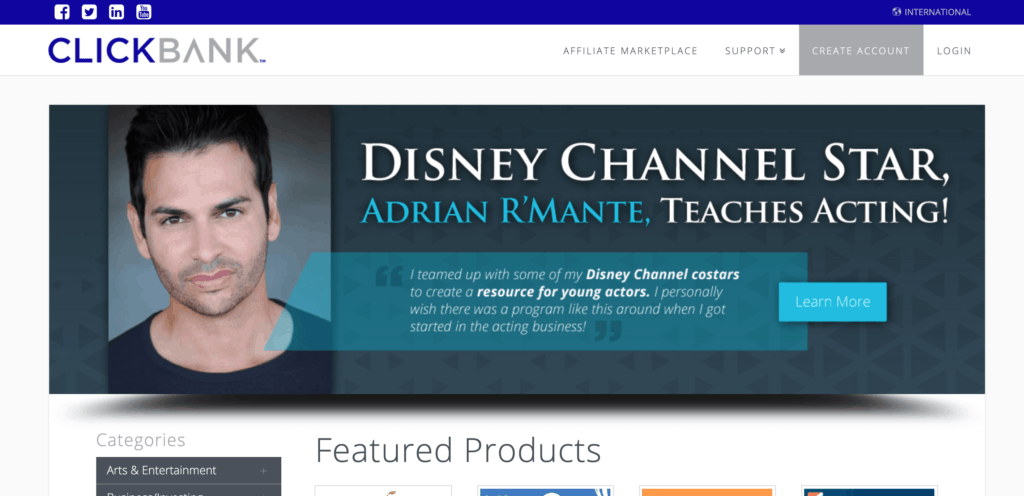
- Operating since 1998
- 6 million unique affiliate products
- 200 million of customers
- Payment methods: Payoneer, direct deposit, check, wire transfer
- Selling in about 190 countries.
- Payment cycle: weekly or bi-weekly.
- Heads up: if your account has a positive balance but doesn’t have new earnings for more than 90 days, it will be cataloged as “dormant”. Clickbank claims the right to take $1/day for your earnings; $5/day after 180 days; $50/payment period after 365 days. The affiliate program will only stop draining your money once your account gets new earnings again or it reaches $0. They won’t notify you when your account becomes “dormant”.
CJ

- Runs since 1998
- Part of Fortune +500 companies.
- 6 million affiliates
- Payment cycle: Monthly
- Payment method: Direct deposit or mail checks.
Amazon Associates
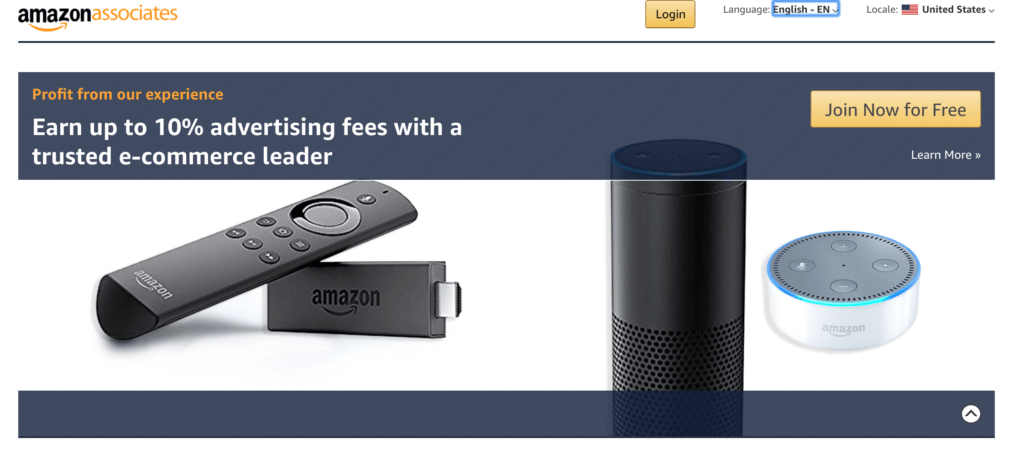
- Commissions are low, being around 10%
- You can link to any product page
- Amazon is a trustable online marketplace; you can expect higher conversion rates than individual merchants.
- Payment method: credit card, direct deposit, Amazon gift certificate or mail checks (the last one is the least recommended since it has a 15$ fee).
- Payment cycle: monthly
Read more: Everything you need to know about Amazon Affiliate (Hubspot Blog)
eBay partner network
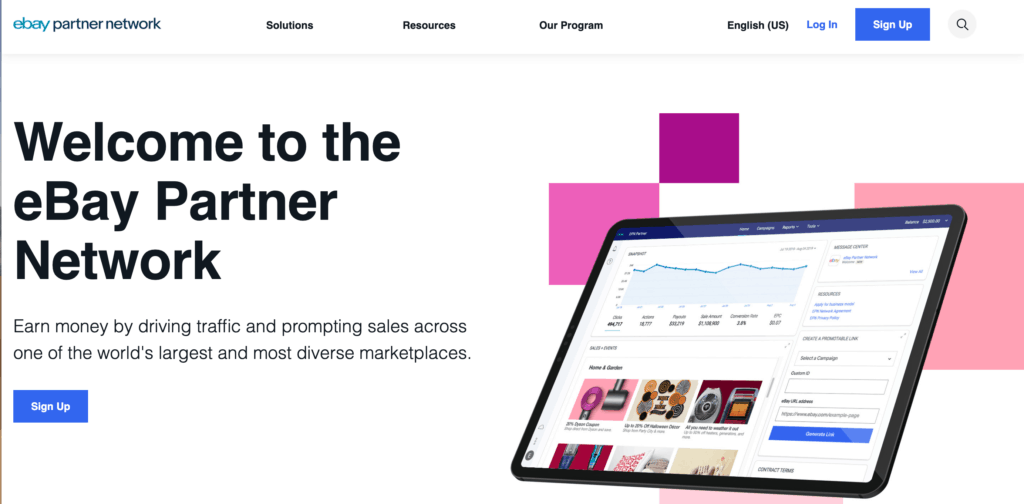
- More than 1 Billion listing products
- More than 175 million purchases per year
- Like Amazon, eBay is one of the most trusted online marketplaces worldwide, helping you increase your conversion rates.
- Payment cycle: Monthly, with a $10 minimum threshold.
- Payment method: direct deposit and Paypal.
Flexoffers
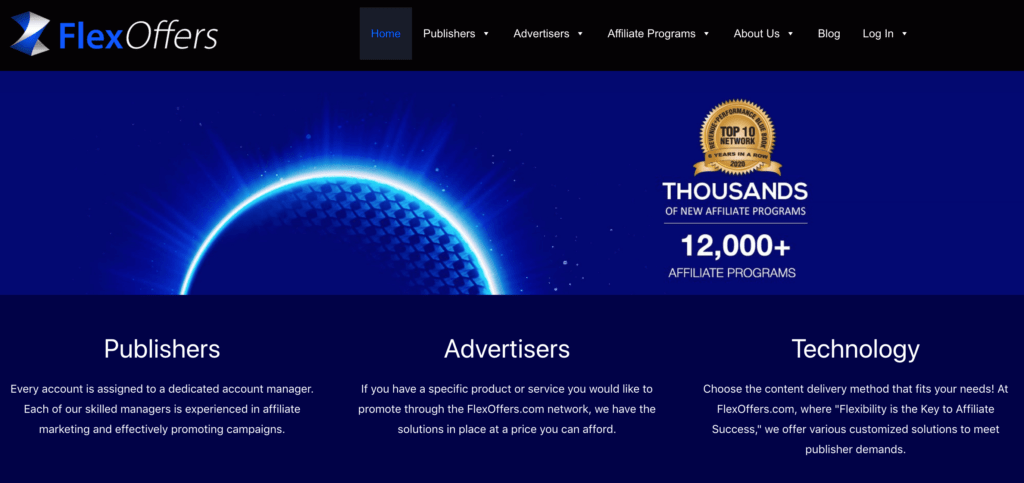
- Operating since 2008
- + 12.000 merchants.
- 25 product categories
- 23 + countries
- Payment cycle: Get paid monthly or within 7 days if you’re a top performer.
- Payment method: Deposits or checks for US residents; Paypal is best for foreigners.
MoreNiche
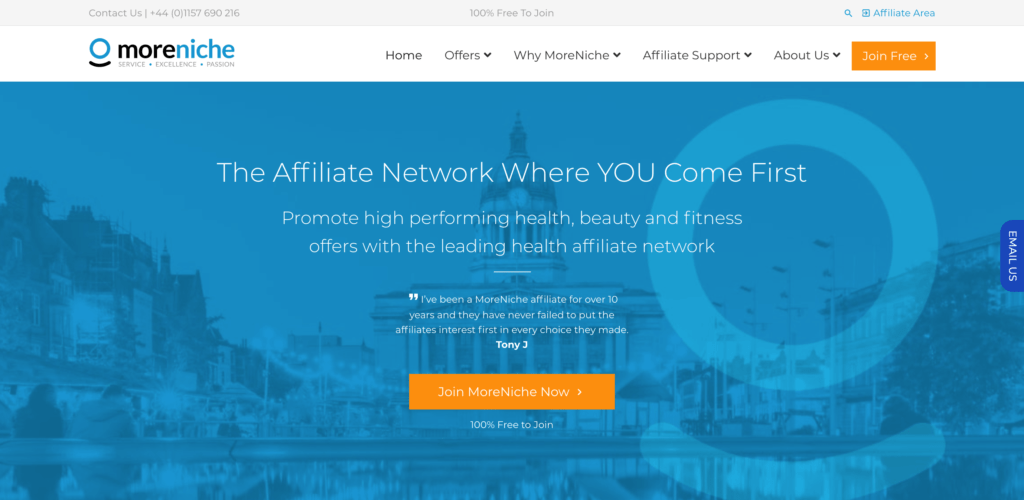
- Starting operation in 1999; one of the very first affiliate tech companies.
- Commission around 30% to 80%
- MoreNiche focuses on health and beauty products
- Payment cycle: Bi-Weekly every 15th and 30th of the month
- Payment method: Direct deposit, check, and Paypal.
What to write and where
To get affiliate sales you need to persuade either directly or indirectly your readers into buying the affiliate product. Most affiliate marketers use blogs as their means of getting affiliate sales but affiliate marketing can be done on any website that has enough traffic.
The key to affiliate marketing is helping clients find affiliate products they want and then finding a way to convince them to click your affiliate link over others on the same page.
Affiliate tools such as autoresponders can help you achieve this goal by automatically sending out emails to those who visit your site, while special “widgets” letting visitors track relevant stats about a particular affiliate program (i.e., number of clicks, number of leads generated, etc.) will allow you to track your affiliate marketing campaigns.
Affiliate marketers should also pay attention to the offers they run and how affiliate links are distributed. In affiliate marketing, one should never rely on organic traffic or solely on SEO (search engine optimization) alone.
Instead, you need to use multiple sources of affiliate marketing together so your business can grow organically while getting paid through affiliate sales for it as well.
That means you will want to get into various social media platforms such as Facebook, Pinterest, and Twitter, etc.
Build up a solid network of friends there that like affiliate products in order to boost traffic (and earn more affiliate commissions).
You’ll then be able to promote affiliate products through a combination of direct affiliate sales along with social media marketing. This ensures affiliate sales even in the event that search engine rankings fall or affiliate traffic dwindles later on.
The key to affiliate marketing is finding affiliate products that you can promote easily and profitably. To have success with affiliate marketing you need not only a good affiliate product but also the right website for attracting visitors as well as trackable tools for tracking your affiliate marketing campaigns.
Effective affiliate marketers know what works for them, be it writing their own blogs, getting into social media sites, publishing reviews of affiliate products online, joining forums related to affiliate marketing, etc.
It’s all about putting together all possible methods for promoting affiliate products while having fun doing it!
Know your products!
I see many affiliate marketers just promote random products and do this in bulk, trying to get as many sales as possible. But this is not a sound nor solid strategy to pursue.
It will be far more profitable for you to promote products that you know and maybe even use yourself instead!
Think about it. How would you be able to write a solid review or record a review video about a product or platform you do not even know?
It will result in a terrible overview of the platform or product and the impression you leave with the people that are visiting your blog.
Another side effect will be that people will not trust your other reviews anymore as well resulting in you will lose traffic instead of gaining it.
Blog Product Reviews
As mentioned before writing blogs about the products or platforms you want to promote is highly effective, as long as the content is of value and high quality.
Writing affiliate reviews should never be a copy-and-paste type of effort. You will see many affiliate marketers doing this, but if you take the time to add some personal touch to your affiliate review and maybe even record video it is going to pay off much more in the long run.
For example, if you are promoting affiliate products that help people make money on their own websites, creating affiliate videos where you talk about how you yourself use these affiliate products to make a living from home would be very effective for getting people’s attention.
And don’t forget to share these affiliate videos or affiliate blogs with others using social media, online forums, etc. This way you can improve your blog traffic and get more affiliate sales.
Cross-promote affiliate products and affiliate networks!
Another good way to get affiliate sales is to cross-promote affiliate products with other affiliate products.
For example, if you have a website about blogging (which could very well be the case as affiliate marketing can be combined with blogging quite well) there are many methods for cross-
promoting affiliate products. One of the most popular affiliate networks out there is ClickBank.
With their affiliate tools, you can check what affiliate products are available in their network and then cross-promote them with your other affiliate products on your blog.
Another example would be to use a “relevant links” section at the bottom of your posts where you can place affiliate links to affiliate products or affiliate networks.
This is a very simple approach, but can also be quite effective if used correctly.
FAQ
How can I start affiliate marketing with no money?
Affiliate Marketing is one of those things that require little investment upfront. However, once you’ve started making money through affiliate marketing, you’ll need to invest in growing your business further.
You may find that starting an affiliate program requires a lot of work initially, especially when you’re just starting out.
But over time, you’ll learn new ways to grow your affiliate income without having to spend too much money.
Which product is best for affiliate marketing?
The answer depends on what type of business you want to run. If you’re looking to sell physical goods like clothing, food, household supplies, etc., then Amazon might be the perfect platform for you.
However, if you’d rather focus on digital content such as e-books, courses, software, apps, services, etc., then other platforms may better suit your needs.
What Is an Example of Affiliate Marketing?
An example of affiliate marketing would be Amazon Associates who pay people to review books online.
They then get compensated through commissions on each book purchased via their links.
This type of affiliate marketing requires no upfront cost to set up. However, there is some risk involved since not all customers end up buying the product.
Amazon Associates Program
The Amazon Associate Program offers free tools to build websites and blogs.
Is affiliate marketing a pyramid scheme?
No! It’s actually one of the few legitimate businesses out there.
The reason it looks like a pyramid scheme is because affiliates earn commissions based on the number of referrals they send their way. So if you refer 100 customers who each pay $50, then you’d only need 50% of the total commission pool to cover all your costs.
That means that everyone else has to bring in 25 new customers to keep making money. This isn’t true though. You don’t have to recruit anyone else to make money from this method.
Can I do affiliate marketing full-time?
Yes, absolutely! There are plenty of successful entrepreneurs doing so right now.
But remember that building a profitable website takes more than simply putting together a list of keywords and creating a sales page.
It will take hard work, dedication, patience, persistence, and consistency. If you think about it, most traditional jobs aren’t really designed to give us financial freedom.
We often put our lives on hold until we retire. And even after retirement, many of us continue working part-time while trying to figure out how to live off our savings.
With affiliate marketing, however, you can create multiple streams of passive income by choosing programs that interest you.
And you won’t necessarily have to wait until retirement before earning enough money to support yourself.
Is affiliate marketing worth it?
The answer depends on your goals and time commitment. If you’re looking to make money fast with little effort, then yes!
Affiliate marketing offers great potential in terms of generating passive income.
But if you want to build a long-term relationship with customers that will last over years, then no.
You’ll need to work hard at building relationships with your audience and creating content that’s valuable enough to keep them coming back.
How much does it cost to start an affiliate program?
There are different ways to go about starting an affiliate program. Some companies charge monthly fees for access to their platform or require a large initial investment.
Others offer low startup costs but high ongoing maintenance fees.
Some companies also provide training materials and resources to help you launch your own affiliate program.
For instance, Bluehost provides tutorials on setting up WordPress sites.
How to find affiliate programs?
Even when a product interests you or fits within an existing hobby, becoming a great marketer for that product takes a lot of work.
There are many ways to identify opportunities for affiliate marketing. One way is to look at what other companies are offering.
For example, if you’re interested in starting a dog walking business, check out all the different pet care businesses available online.
If you see something that looks interesting, contact them directly and ask how they’d be willing to share commissions from sales generated using their referral code.
Another option is to search Google for “affiliate programs” + keywords related to your niche. This should bring up some results.
You may also consider joining affiliate networks like Commission Junction or ShareASale.
These platforms connect merchants who sell products and services with affiliates who promote those items through social media channels such as Facebook, Twitter, Instagram, Pinterest, YouTube, etc.
Once you’ve found a merchant that has products or services you feel would fit well into your blog, you can sign up to become an affiliate.
How Do Affiliate Marketers Get Paid?
There are two main ways: Commission based and Cost Per Acquisition. Let’s take a look at each one.
Commission Based – When you signup to become an affiliate, you’ll get access to your own unique URL where you can place links to any Amazon product page.
Whenever someone clicks on those links and buys something, you earn commissions. The amount of commission varies depending on which plan you choose.
Cost per acquisition – CPA pays you every time someone signs up for a service or makes a purchase after clicking on your link.
It doesn’t matter whether they buy anything or not.
Commission rates vary by company so it’s important to do research before signing up.
Most companies pay anywhere between 5% and 30%. You might even hear stories of people earning over $100K/month!
What Are Your Options With Affiliate Marketing?
As mentioned above, there are several options for choosing an affiliate network.
Each offers its own benefits and drawbacks. Here are just a few things to think about when deciding which one will best suit your needs.
Affiliate Network Fees
The first thing to decide is whether you want to join a free or paid affiliate network.
Free ones tend to have fewer features but allow more flexibility. They often offer higher payout percentages than paid networks. However, most free networks don’t provide tracking tools. If this isn’t important to you then go ahead and try one out. Otherwise, stick with a paid network.
Payout Percentage
The second factor to consider is the payout percentage. Payouts range from 10-90%, although 90+ percent is rare.
Some networks only pay 70% while others pay 100%. Higher payout percentages mean bigger checks.
But keep in mind that these numbers aren’t guaranteed. Sometimes affiliates receive less money than expected.
So make sure you read reviews carefully before committing to a particular program.
Tracking Tools
Some networks offer advanced analytics tools whereas others don’t. For instance, I use Clickbank’s built-in reporting system.
Others require third-party software. This means extra fees if you’re already paying them monthly.
Support & Training
Some programs come with excellent customer support.
Other times the help desk answers questions very slowly. And some never respond at all.
Make sure you check their FAQ pages and forums regularly. Also, be aware that many training videos are outdated.
Conclusion
Affiliate marketing is a great way to earn passive income when you’re starting out.
It all starts with choosing affiliate products that are of high quality and value, so make sure you do your research before making any decisions about affiliate networks or affiliate programs.
For example, if you have an interest in blogging as well as affiliate marketing, there are many ways to cross-promoting affiliate products between these two platforms.
Another tip would be to use “relevant links” at the bottom of blog posts where it’s appropriate to place affiliate links related to topics discussed in the post itself.
With some time and effort put into your new business venture, we know you’ll get off on the right foot!

